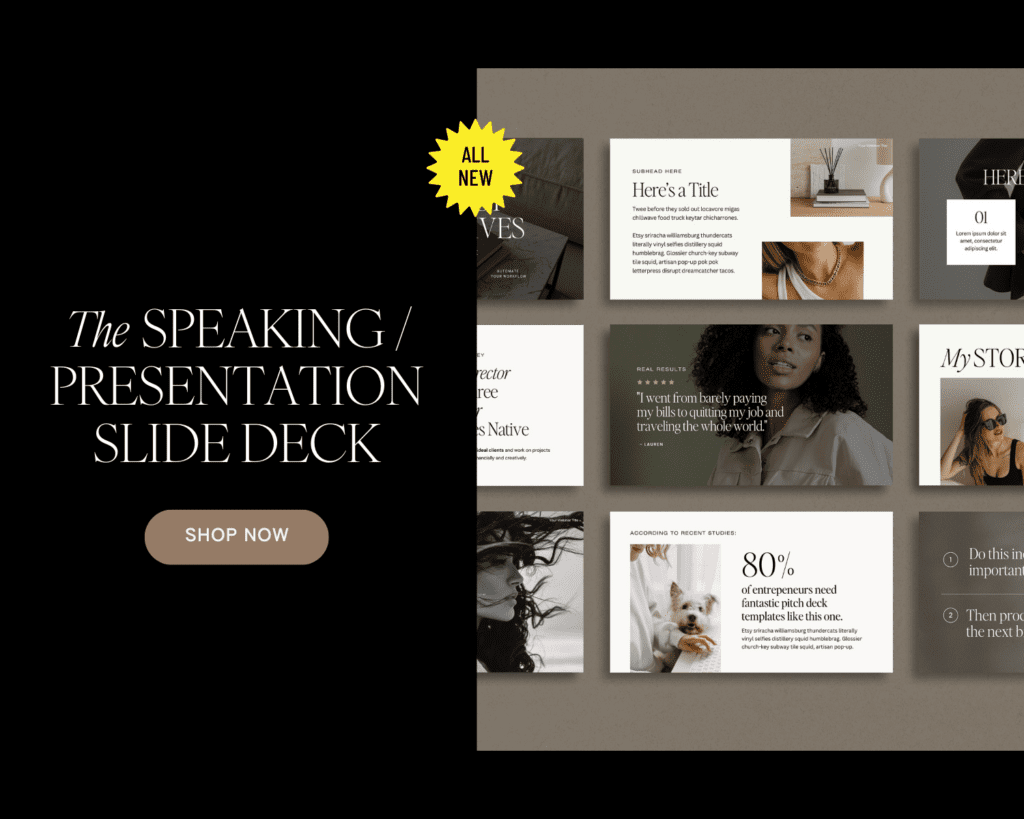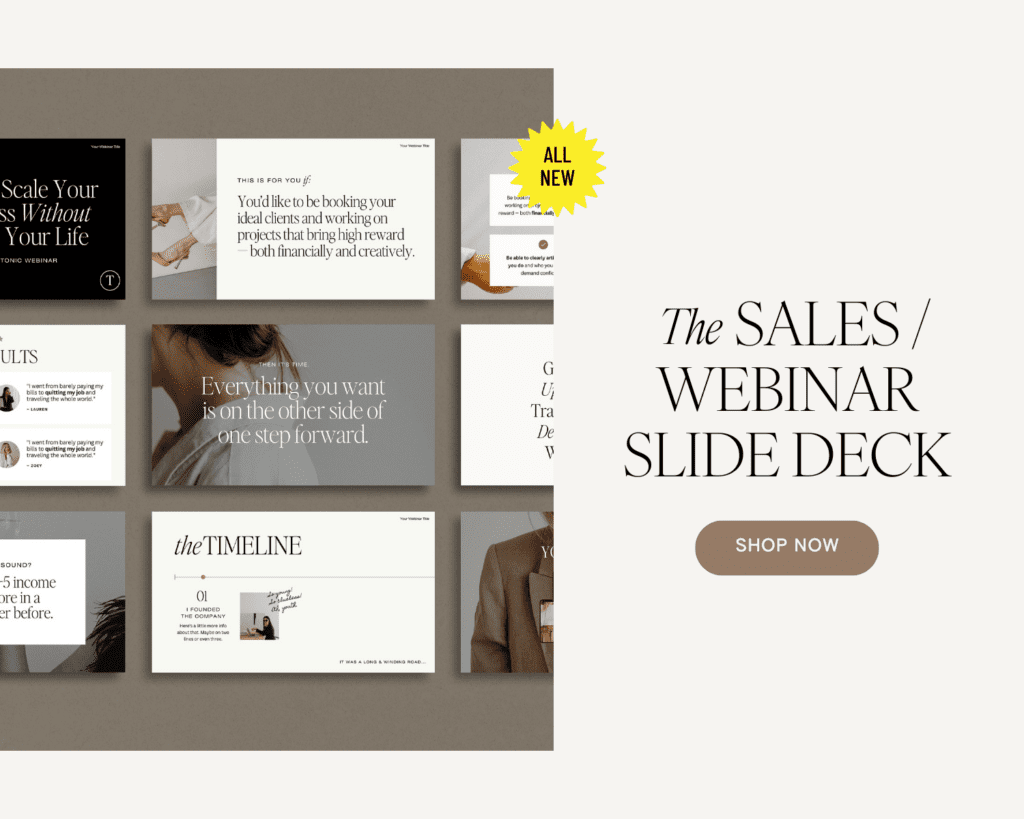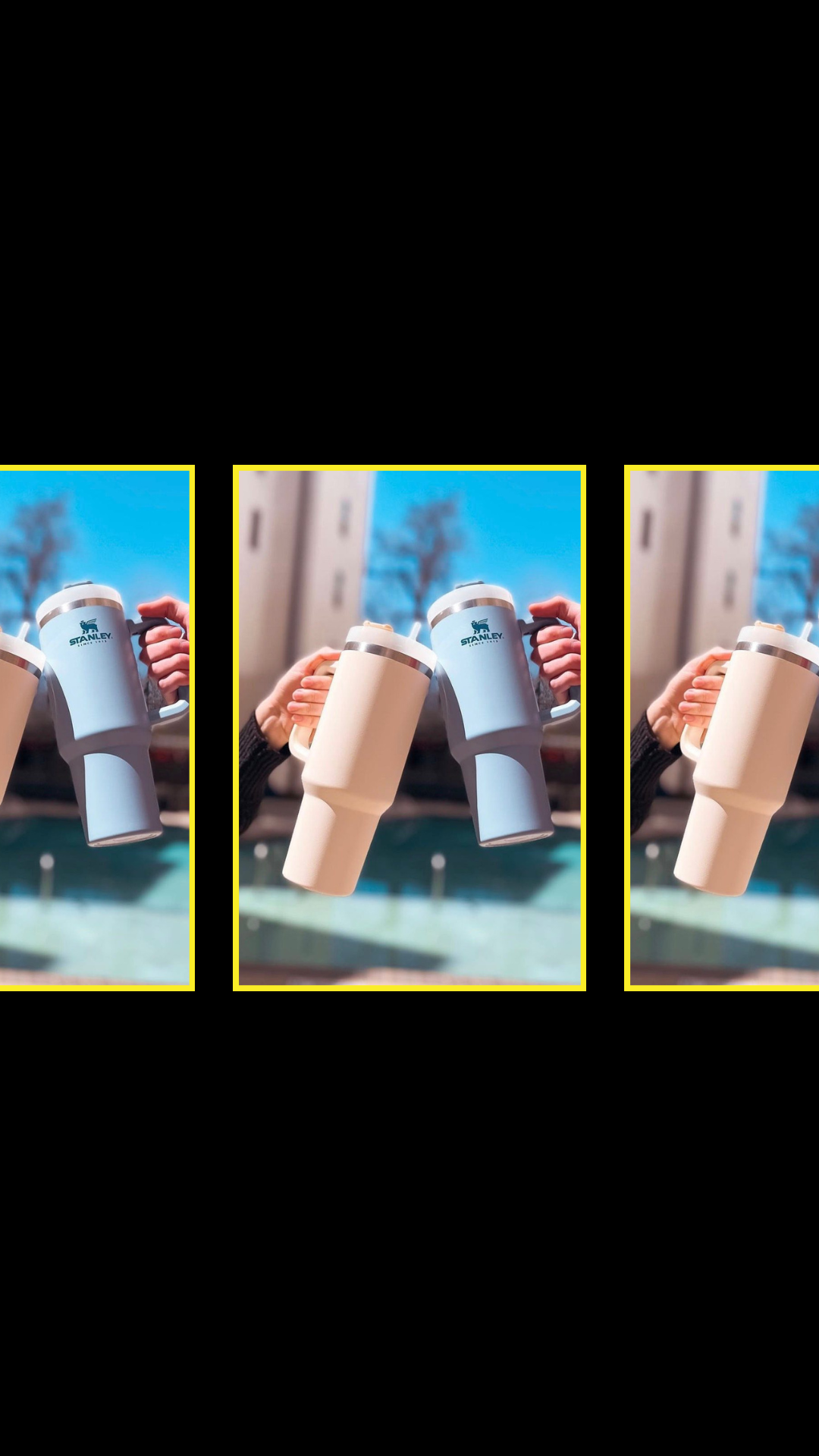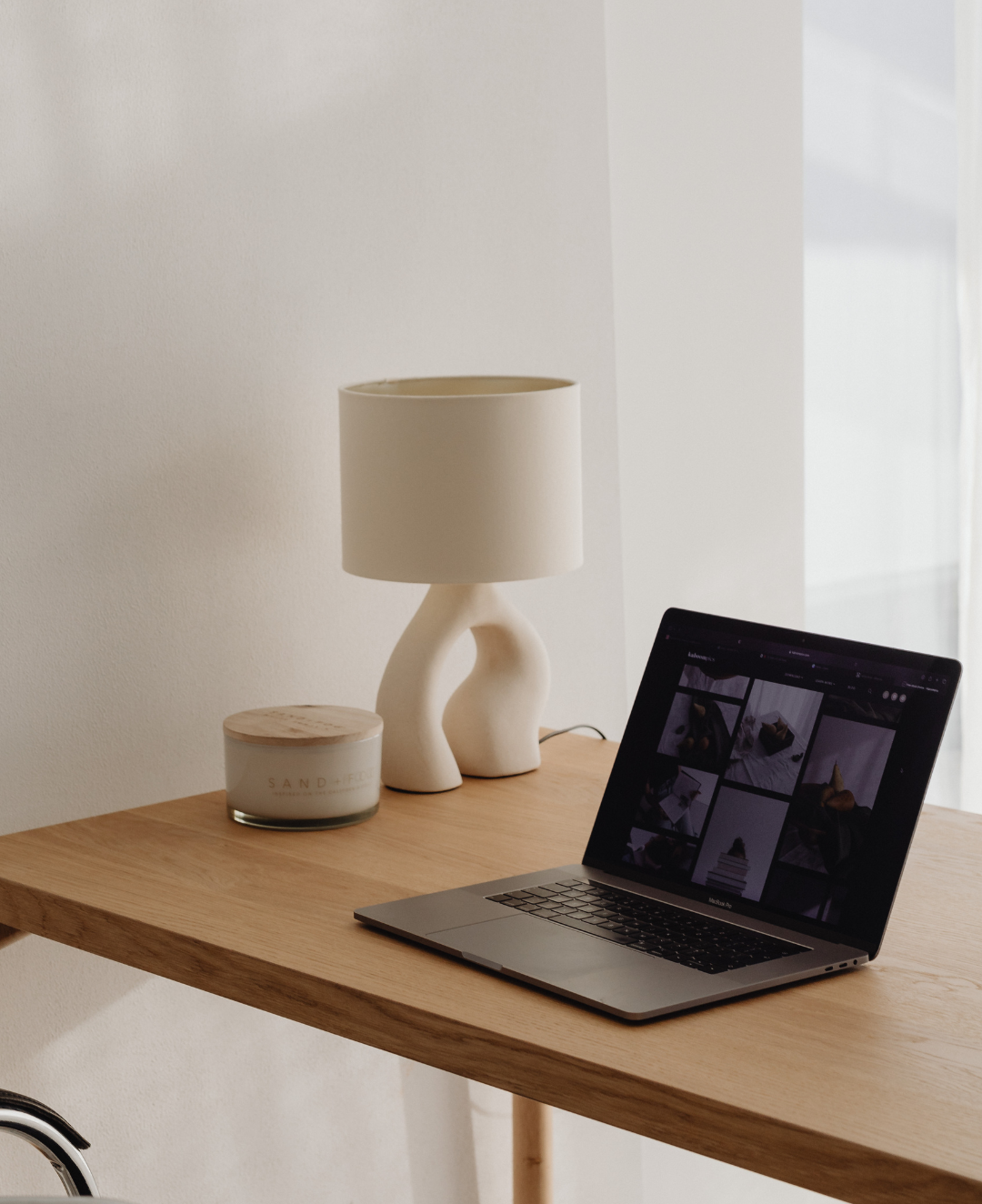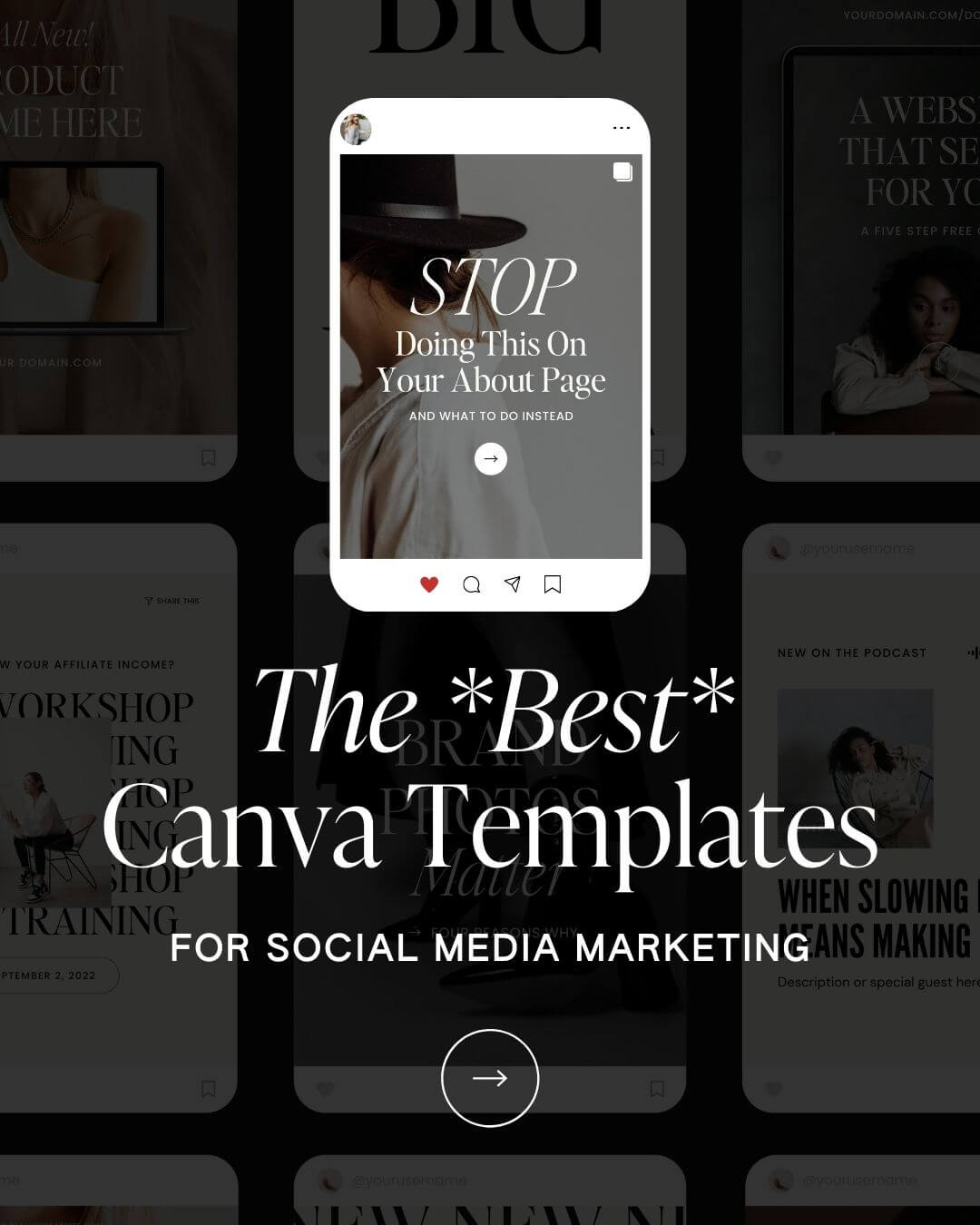As a solo entrepreneur, you’re on your own doing all the things. But we don’t think you should have to be.
Not when you happen to be Internet friends with a team of cocktail-obsessed marketing experts at your disposal, ready to help you accomplish your goals in style.
While we may be an online template shop, we don’t think our support should end with templates, but rather begin with them.
We don’t just want to give you a beautiful template for your online presence, we also want to give you advice about how to improve your online presence.
We want to teach you how to market yourself, how to sell your offerings, how to communicate with your audience, how to grow your business… basically, as many resources as we can possibly provide you, that’s our goal.
So, when we launched our Webinar + Sales Funnel Canva Slide Deck and our Speaking + Presentation Canva Slide Deck, we knew we wanted to share that same level of additional support that we always set out to give. It’s just the TONIC way.
And, because you deserve better advice than “picture everyone in their underwear!” — I called in the big guns to help out.
Meet Mike Pacchione.
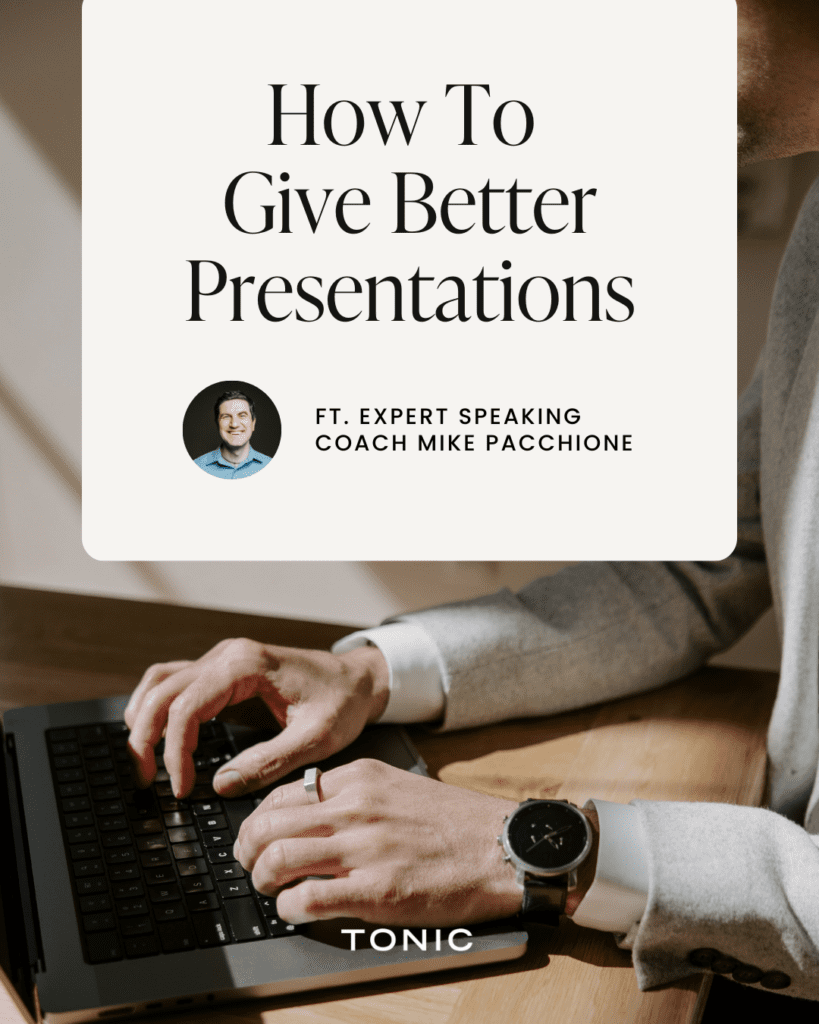
Mike, in addition to being a fast friend of mine, is the Founder of Best Speech, and he happens to be the KING of giving (and teaching others how to give) audience-capturing, attention-grabbing, entertaining-as-hell speeches.
He’s coached industry rockstars like James Clear, Donald Miller, Amy Porterfield, Tarzan Kay, Laura Belgray, and a whole lot of other best-selling authors, Olympic gold medalists, pro athletes, & more — and ALL of his clients cite him as the reason they feel confident in writing and delivering the best speeches.
…which is why, when I decided I wanted to support you in not only creating but also conceptualizing, preparing for, and delivering the best presentations EVER, I knew Mike had to be the one to do it.
So, I gathered all of my best questions about how to give better presentations, and asked Mike to please tell us everything.
Here’s how it went. 👇
Q: So our lovely readers don’t have to take my word for it, how did you get into the world of public speaking + why should we trust your advice about giving better presentations?
A: I really want to give you a nice, short answer here, but it’s impossible. So, I’ll do my best to summarize the story here:
I was working as an adjunct professor, and a guy from Nike came to my class.
I had no idea he’d be there; he came with his girlfriend.
(He apparently had nothing better to do that day than to come to his girlfriend’s college class, but thank goodness for that, because that guy changed my life.)
He came up to me during a break, and said “hey, you’re a really good presenter.”
When I thanked him, he said, “I’m not in your class. My girlfriend is. I actually work at Nike, and I’m in charge of bringing in speakers. Would you like to present at Main Campus sometime?”
And, of course, I thought “sure, this seems like something I should do.”
After that presentation, I basically thought: okay, cool, I want to do this as a job.
So, I latched onto an awesome company in the Bay Area called Duarte, and — it was a little more complicated than this, but for the sake of keeping the story short — they hired me and I flew all over the world, presenting at some of the biggest, most impressive companies in the world.
I did that for 8 years, and encountered every single type of thing that could go wrong (and right!) during a presentation, and I just… figured it all out on my own by doing.
And then, on the side, I started helping out other people who wanted to give better presentations and that’s how my company, Best Speech, was born.
Q: If someone asked you “hey, Mike, do you have tips about public speaking?” where would you tell them to start?
A: The beginning.
Ha, ha. I know it sounds like I’m being facetious when I say that, but it’s true:
Whenever I work with someone to craft a better speech, we always obsess over the beginning, because if you have a good beginning, you win the audience over right away, and the rest of your presentation feels easy.
Q: What would you tell someone who feels nervous about giving a presentation or anxiety from public speaking?
A: I would tell them that, despite their anxiety from the prospect of public speaking, the audience is rooting for them.
When people are nervous about giving a presentation, it’s usually because they have some fear about how the audience will react.
I PROMISE YOU: NO ONE IS THINKING “I HOPE SHE BOTCHES THIS RIGHT NOW.”
Your audience isn’t hoping you mess up, or feel awkward, or look uncomfortable; they genuinely want you to do a good job. They’re hoping that you’ll be entertaining, and clear.
They’re cheering you on, not rooting for your downfall.
I know it can be intimidating to step up on a stage and give a presentation in front of a group of people, but remember: they want you to do a good job.
My best tip for overcoming nerves when giving a presentation is to do your best to replace the feeling of anxiety with some level of excitement. Find the dopamine hit, and chase it.

Q: What would you tell me if I’m not ‘stagefright’ nervous, but instead am ‘what if they already know this and they boo me off the stage’ nervous?
A: First of all, I’d tell you that you do deserve to be onstage.
It’s very unlikely that you’d ever be onstage giving a presentation about something you know nothing about, however, here’s a little speaking secret:
You only need to be ONE step ahead of the audience.
Your job is to, on a basic level, share a new perspective about a given topic, using material from your own experience.
(That “but anyone could talk about this, why me?” type of nervous = GONE, when you remember that your purpose on that stage is to share your stories and your examples.)
When you’re giving a presentation, you’re, of course, sharing information about something, but you’re doing it in a way that says:
“I’ve been down this road before, and I want to give you these shortcuts to getting to this place, so you don’t have to get banged up like I did.”
Hot take? People don’t want to hear from *experts.*
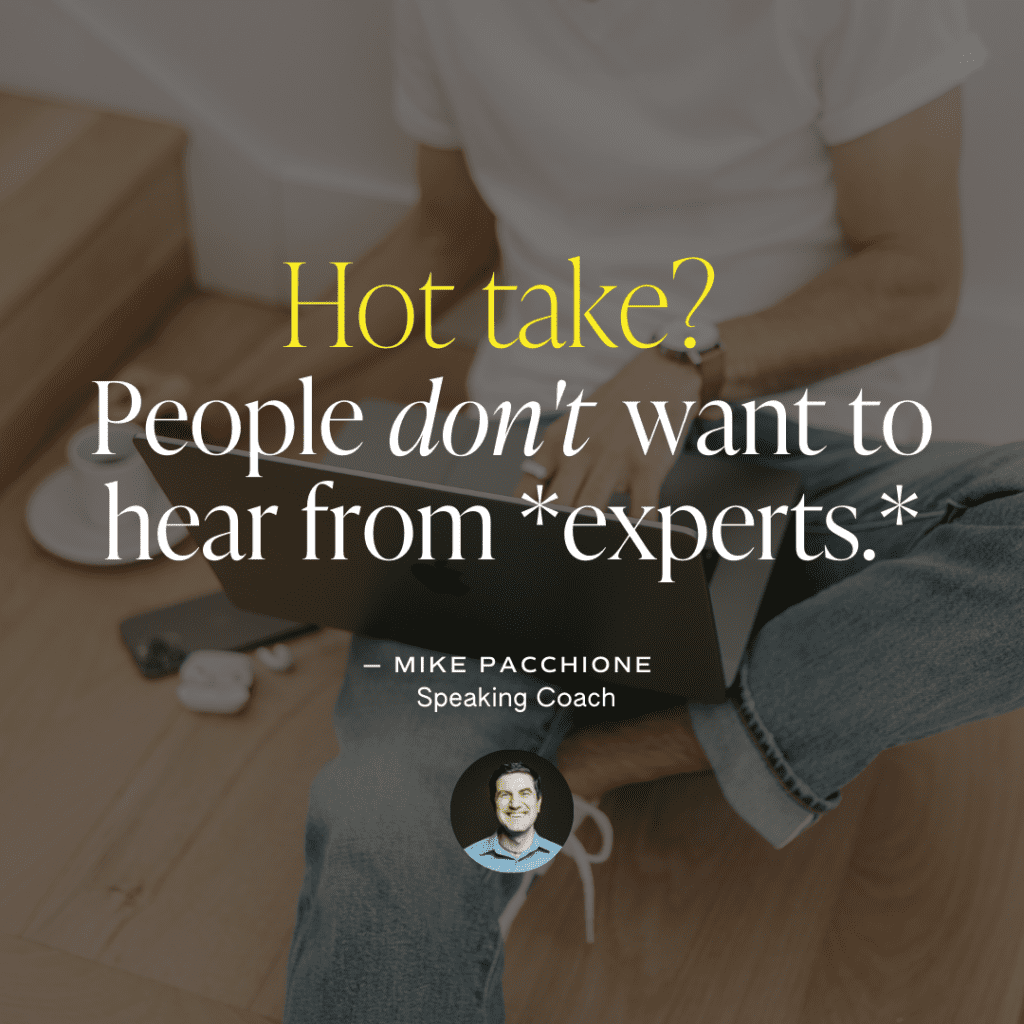
People want to hear from people who are just a little bit past them in their journey, because oftentimes it’s been so long since the “experts” have experienced what the audience is going through, that they aren’t able to relate to them anymore.
It’s a big win to be closer to your audience — not a disadvantage.
Making the mental switch from “I can’t do this, this is really nerve-wracking to “I know I can do this” is also a huge help in getting presentation-ready, which is something you’re only able to do when you adequately prepare for the event.
Q: So… how do you adequately prepare for giving a presentation?
A: Rehearse, part by part, until you get it perfect.
A lot of presenters make the mistake of rehearsing their speech in full, from beginning to end, when they’re preparing, but it makes way more sense to master it in parts.
Practice the introduction of your speech until you feel great about it. Then do the same with the first point, and the second, and repeat the process until the end.
It’ll make things feel a lot more manageable, and it’ll help you feel certain that you’re confident in the entire thing.
Side note: find that rehearsing with music on minimizes the awkwardness of it. It feels weird to stand alone in your office and talk to yourself.
Q: How will I know if I’ve prepared enough for my presentation? Is there anything else I can do to prepare besides rehearse it?
A: Here’s the thing: You will do your best if you already KNOW the talk is good.
Get feedback from people you know and trust ahead of time.
If you have the opportunity, practice delivering the presentation to someone in person, or over Zoom. If not, record it and send it to them.
One of my favorite clients swears by this method.
He’ll record himself reading the script, email it to people, include an anonymous Google form, and ask questions about the speech, like…
- Was it unclear?
- What felt long?
- Was there anything I over-explained?
- What was your favorite part?
The anonymity allowed him to get feedback without feelings involved, and the specific questions allowed him to get better feedback than just “sounds great to me!”
When you practice delivering your speech, you’ll feel so much more prepared.
Instead of seeking validation from your audience, hoping and praying your speech is good, you’ll already know it’s good, because you verified it ahead of time with the help of people you trust.
Q: What’s the #1 mistake people make when giving presentations?
A: I can’t narrow it down to one, so I’m gonna give you three.
#1 – Over-explaining things.
Don’t force your audience to scuba dive when you want them to snorkel.
If they want more information from you, they can GET more information from you… later. Your talk doesn’t have to demonstrate an encyclopedic level of knowledge on your topic. Just give them enough to satisfy them for now.
After your speech, they can visit your website, ask you questions, introduce themselves and chat with you – there are tons of options for the “more” later.
Of course, there will be a little voice in your head wondering “do they get it?” – but this is your sign to ignore the urge to keep explaining.
Audience members can only process so much, so err on the side of concise.
#2 – Looking to the audience for affirmation.
Walk on that stage confident that what you have is good.
You have to deliver that talk no matter what. You can either do it tentatively, or let it rip.
So, let it rip.
#3 – Speaking too fast.
Not to be confused with speaking too quickly. I’m not talking about fast talkers. People can watch videos and listen to podcasts on 2x speed, and it’s fine.
I’m talking about not letting the audience catch up.
When you listen to a podcast, there’s naturally a break. People need this break to stay engaged in the content.
You can speak as fast as you want, as long as you give a ‘paragraph break’ to your audience here and there.
Think of not giving this break being the equivalent to reading one looong email on your phone. You’re not gonna want to read that big, huge block of text. You’ll zone out.
Speaking too fast, without breaks, is the equivalent of that.
Q: How do you know if your presentation is good enough?
A: If you took my earlier advice and practiced with / sent your presentation to people and heard their response; you’ve already seen and heard their reactions, and you’ve likely implemented their feedback.
You got this.
Now, if you were panicking pre-presentation, and you came to me and asked “is this good enough?!?!” my pep talk would be:
There’s no version where you get to *not* deliver this talk right now.
You don’t need to be a pro wrestler flexing your knuckles by your waist, completely confident and ready to crush it, but you DO need to trust yourself.
Trust > anxiety.
Q: Any advice for making presentations more engaging?
A: Find a creative way to make a point that people intrinsically understand, but hasn’t yet hit them on a deeper level.
You’re looking for a relatable way to deliver that “aha!” moment, or that “oh, I hadn’t thought of it like that, now I get it” moment, or that “what a good way to look at it” moment.
The moment of JOY.
This is something that can only be done by sharing your stories, your experiences, your point of view. Think of a way you can relate to your audience, to help them reach that moment.
Q: Actually, I want more. What are your 3 best tips about public speaking and giving a good presentation?
A: I’m gonna split my tips up into the 3 categories of giving the best presentation: engagement, writing, and supporting materials:
ENGAGEMENT — Look for ways you can surprise your audience.
And because I know your next question is “how?!” – do this by thinking about how you can do something your audience isn’t expecting, like starting off with a really great hook, or moving around the room, or starting your speech without introducing yourself.
My clients have done things like…
- Sneak into the room early and put things under chairs
- Planting a heckler in the audience
- Breaking out into song
- Asking for a volunteer for a surprise mock first date
People are expecting you to go up, introduce yourself, give your speech, thank them, and leave. Anything outside of those norms would be enough to shock them; it’s simpler than you’d think.
WRITING — Remember that, even if your audience knows something about the topic you’re presenting on, they don’t know your perspective.
Everyone is always so scared that they’ll tell their audience something they already know, but chances are, they don’t.
Even if they know the subject, they don’t know the story.
Using personal examples and experiences to showcase your perspective is the easiest way to ensure that your presentation will be a) entertaining, and b) memorable.
PRESENTATION MATERIALS — Use slides to help you tell your story, not to replace your story.
You wouldn’t go to the movie theater to watch the cast read the script.
So, why would anyone want to watch you read your presentation straight off of slides on a screen?
(Interrupting Mike for a sec to share an important side note here — have you seen our Canva presentation templates?! With Mike’s advice in mind, we designed the best slide deck templates for you to use for your presentations, speeches, webinars, online courses… anything. Check them out right here!)
Q: Speaking of presentation materials… Do you have any tried-and-true tips for creating great slides for presentations?
A: Duh! So many.
#1 – Warning: people will read whatever you put on the screen.
The more words you put there, the more times you’re asking them to read and not listen to you. As I mentioned earlier, people don’t want to watch you read off of a screen. They want to hear you talk. Your slides are just a supplement to your story.
#2 – Whenever you can, represent your ideas with visuals, not words.
It doesn’t have to be pictures, either. Drawings, diagrams, anything. Visuals are easier to process than words, meaning they’ll distract the audience from the story way less, keeping the attention where it belongs: on you and your speech.
#3 – Think of your slides as a billboard.
You want your audience to be able to quickly process what’s on the slide while you’re talking.
If what you’re putting on your slides takes your audience more than a second to think about it or process it, you’ve failed the billboard test.
If brands plastered billboards with paragraphs of text all over them, they’d be responsible for lots of highway crashes, don’t you think?
There’s a reason why they’re so short and to-the-point. Avoid crashes by keeping things concise.
#4 – Use the sound bite.
Sometimes, it’s best to use your slide to reiterate what you’re saying out loud, to emphasize the point or help illustrate the story.
This is something you’re likely familiar with already.
Take this blog post, for example. Maybe I’ll say something really noteworthy or profound or relatable, and you’ll want to share it on Instagram. You’ll take the quote out from the blog (aka the longer, more involved piece of content), and post it on its own (to emphasize the point).
#5 – Use your presentation slides as more than just your own notes.
Instead, use it for drama, humor, or story support. It shouldn’t just be a list of bullets to help you remember what you’re supposed to be talking about.
#6 – You lead the slides, they don’t lead you.
Don’t click the slide then talk. Talk first, then click the slide.
Your slides should be a visual guiding your audience through the presentation seamlessly. They’re not your notes, remember?
#7 – Care about how they look.
The moment you show up on stage, and slide 1 looks beautiful and well thought-out, it makes your job as a speaker so much easier, because you’re signaling to your audience that you put effort in — they can tell immediately that what they’re about to hear is gonna be good.
Now, I have to step in here and say: I swear I didn’t pay Mike to say this next thing.
Was I secretly hoping he would? Yes.
Did I internally jump for joy when he articulated exactly what’s so important about having beautiful presentation slides? Yes.
The #1 thing Mike told us you can’t have a killer presentation without was…
“Your story.”
If you know me at all, you know how much I love a story. How much I live for a story. But that’s not why I was so excited by his answer.
His next sentence was.
“Your slides are meant to be the character in your story, like a comic book, helping your audience visualize what you’re talking about,” he said. “And the perceived worth of good design is off the charts.”
(Tell ‘em, Mike!)
“Well-designed slides will not only engage your audience and cause them to willingly pay closer attention to your presentation, they’ll also cover up for any flaws in your presentation itself, making them invaluable.”
I couldn’t have said it any better myself.
The design of your slides MATTERS. (A lot)
It’s why we chose to design our Webinar + Sales Funnel Canva Slide Deck and our Speaking + Presentation Canva Slide Deck in the first place — because great design is important in all aspects of your business, not just for your website, or your social media presence.
